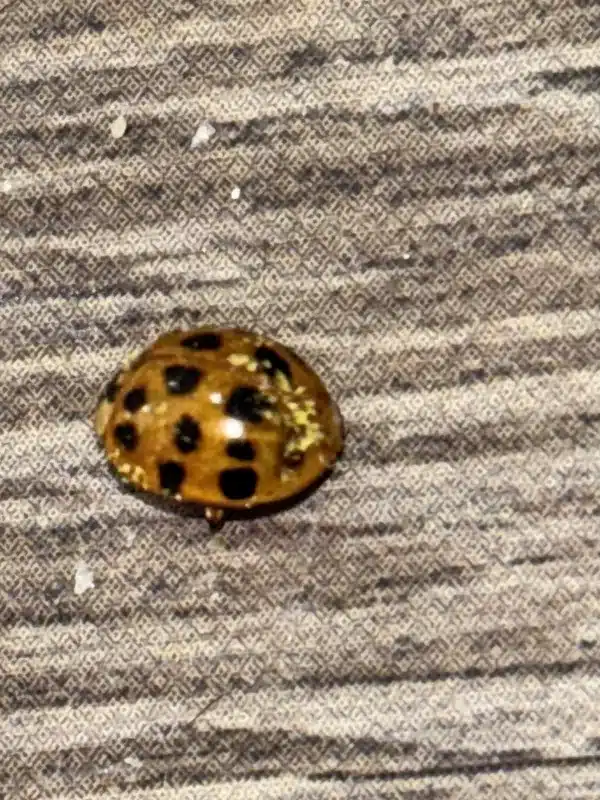When ladybugs show up in large numbers around your home, they quickly transform from helpful garden visitors into a serious nuisance. These small beetles might seem harmless, but dealing with a ladybug infestation can be frustrating and overwhelming for any homeowner.
In my four years as a registered technician with our family business that’s been serving the DMV area for over 50 years, I’ve seen countless homeowners struggle with ladybugs clustering on their siding and finding their way inside your home. The good news is that you can successfully get rid of ladybugs using the right approach.
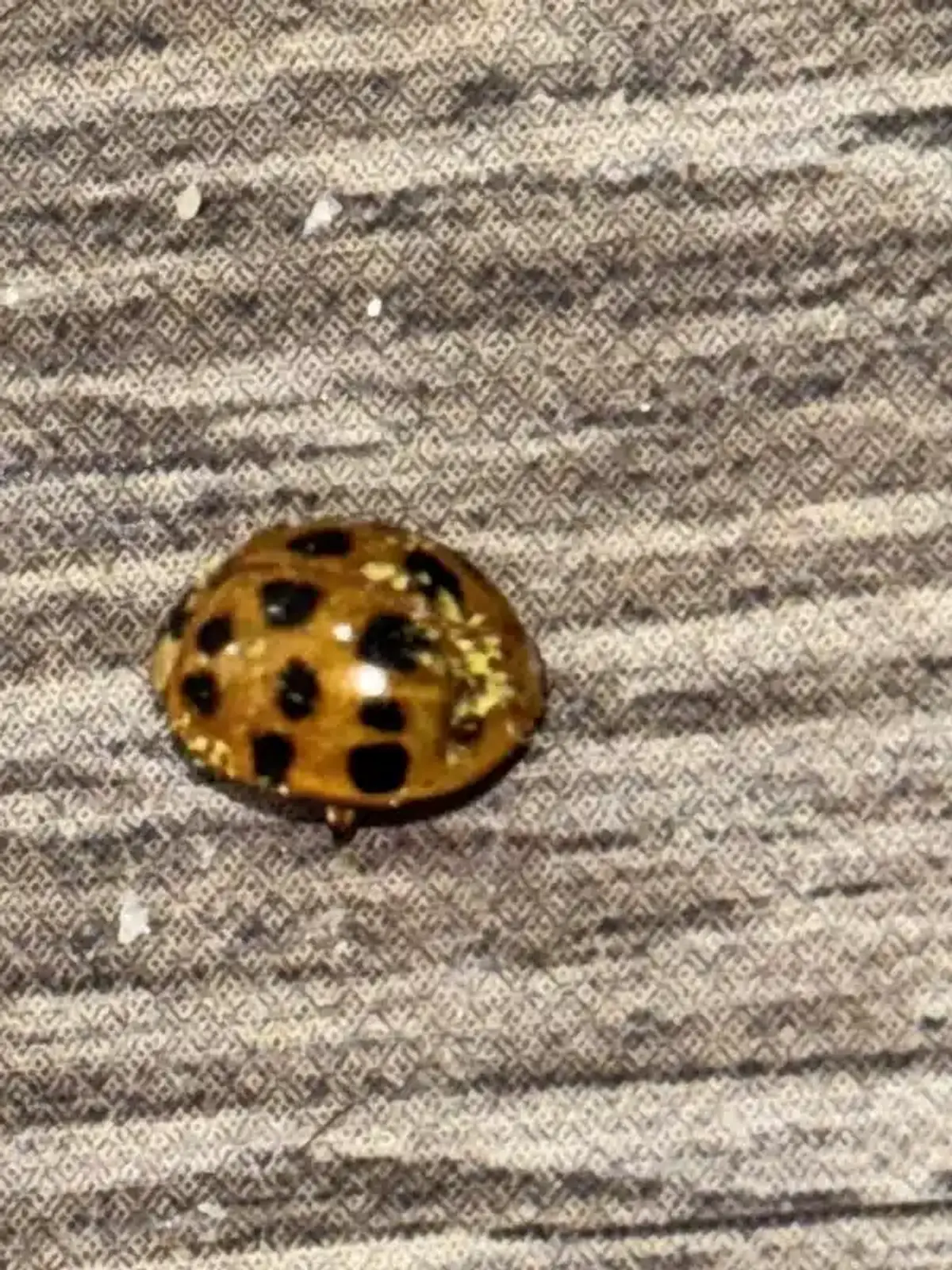
Understanding Ladybug Infestation Problems
Most ladybug issues actually involve the asian lady beetle (Harmonia axyridis), not the native ladybug species. These invasive insects were originally introduced by the USDA for pest control but have become a major nuisance pest themselves.
The asian beetle looks similar to traditional ladybugs but has some key differences. They’re about ¼-inch long and range from mustard-yellow to deep orange-red with variable black spots. You can identify them by the pale “M” or “W” marking on their head and their tendency to release yellow liquid when disturbed.
According to Virginia Cooperative Extension, these beetles seek overwintering sites when temperatures drop, typically peaking around October 15th in Virginia. They’re attracted to light-colored siding and sun-warmed surfaces, especially on south and west-facing walls.
Why Ladybugs Become a Pest Issue
While ladybugs are considered beneficial in gardens where they eat aphids and other garden pests, they become problematic when they congregate around your home in large numbers. A single house can harbor tens of thousands of these insects during winter months.
The main issues include:
- Staining fabrics and walls when ladybugs release their yellow hemolymph
- Creating unpleasant odors that many homeowners find offensive
- Causing respiratory allergies in some people, with symptoms comparable to cat or cockroach allergies
- Becoming a general nuisance as they remain active throughout winter on warm days
Additionally, when these beetles find their way inside your home, they can be difficult to remove without the proper approach.
Signs of a Ladybug Pest Infestation
Recognizing an infestation early helps you take action before the problem gets worse. Here’s what to look for:
Exterior signs include dense clustering on sunny walls, especially around windows and doors. You’ll typically see them on south and west-facing surfaces where the sun warms the siding.
Inside your home, watch for live adults on ceilings and windowsills. You might also notice yellow spots under areas where they congregate - this comes from their reflex bleeding when disturbed.
The timing matters too. In the DMV area, watch for the first cold front followed by sunny days between late September and mid-October. This weather pattern triggers their search for overwintering sites.
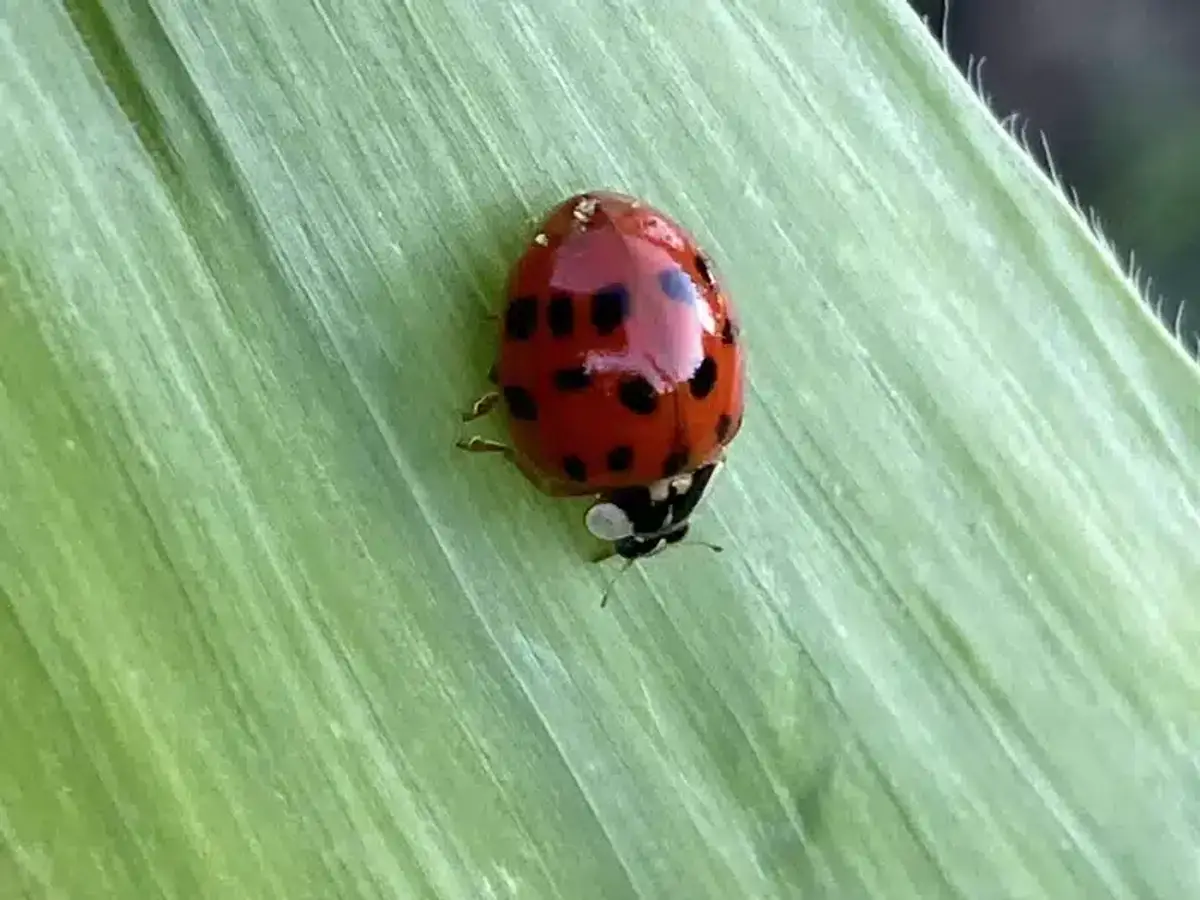
Seasonal Patterns
Understanding when ladybugs are most active helps you prepare. These insects have two main activity periods: a fall invasion when they seek places to hibernate, and a spring emergence when they become active again.
During fall, ladybugs are attracted to warm surfaces and will find any way inside through cracks as small as ⅛ inch. In spring, those that successfully overwintered inside will try to make their way back outside.
Prevention: The Best Way to Get Rid of Ladybugs
Preventing ladybugs from entering your house is much easier than removing them once they’re inside. The key is sealing entry points before they start looking for winter shelter.
Sealing Entry Points
Complete your exclusion work by mid-September for best results. Focus on these areas:
- Caulk cracks ≥1⁄16 inch with high-quality silicone or latex caulk
- Use foam or copper mesh for larger gaps around pipes and utilities
- Install tight-fitting door sweeps with gaps no larger than ⅛ inch
- Repair window screens and install #16 mesh behind gable and soffit vents
- Weather-strip attic hatches and window AC units
Every air leak in your home is essentially a potential entry point for these insects. Consider having an energy audit done - it will help identify areas where ladybugs might find their way inside.
Essential Prevention Steps
- Timing is Critical: Complete all sealing work by mid-September before ladybugs start seeking shelter
- Focus Areas: Prioritize south and west-facing walls where sun exposure attracts the most ladybugs
- Gap Size Matters: Seal cracks as small as 1/16 inch - ladybugs can squeeze through surprisingly tiny spaces
- Professional Insight: Energy audits reveal hidden entry points that homeowners often miss during DIY inspections
Reducing Attraction Factors
Besides sealing cracks and gaps, you can make your home less attractive to ladybugs. Switch porch lights to yellow “bug” bulbs and close curtains at dusk to reduce light attraction.
Keep vegetation trimmed away from your house, especially dense ivy and areas with leaf litter. These provide additional hiding spots that can attract other ladybugs to your property.
DIY Methods to Get Rid of Ladybugs From Your Home
When ladybugs have already made their way inside, you need to know how to get them out without making the problem worse.
Vacuuming: The Most Effective DIY Approach
The fastest way to get rid of ladybugs indoors is with a vacuum cleaner. This method avoids the staining and odor that comes from crushing them.
Use a shop vacuum with a knee-high nylon stocking inside the vacuum bag to trap the beetles. This makes disposal easier and prevents them from escaping. After vacuuming, immediately empty the vacuum or place the bag in the freezer to kill any remaining insects.
Natural Deterrents and Repellents
Several natural methods can help deter ladybugs without using harsh chemicals. Citronella oil mixed with water in a spray bottle can create a natural repellent barrier around entry points.
Bay leaves placed near windows and doors may also help keep them away, as ladybugs hate strong scents. Some homeowners find success with dish soap and water solutions applied to areas where ladybugs congregate.
Light traps work well in dark areas like attics and can be highly effective in reducing populations in confined spaces.
What does the science say?
According to University of Kentucky Extension research, light traps can reduce ladybug populations by up to 80% in confined spaces like attics and crawl spaces. The research shows that these traps are most effective when placed in dark areas where ladybugs naturally congregate during their dormant periods. The study found that combining light traps with exclusion methods provides significantly better results than either approach used alone.
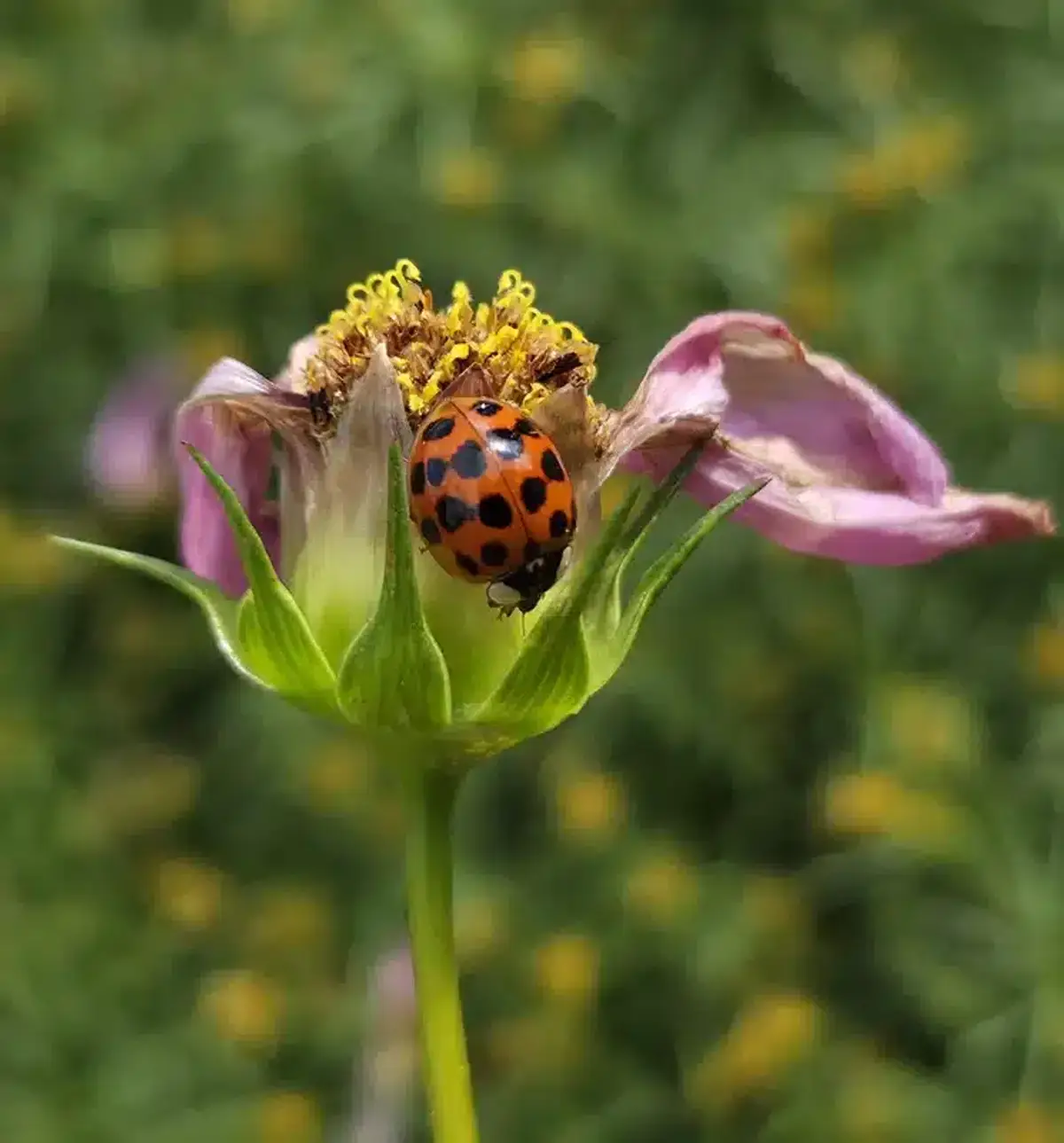
What NOT to Do
Avoid crushing ladybugs, as this causes staining and releases pheromones that can attract other ladybugs. The yellow stains can persist for up to a year on porous surfaces.
Don’t use indoor insecticide sprays or bug bombs. These show poor results against ladybugs and create unnecessary chemical residues in your living space.
Professional Pest Control for Ladybug Infestations
Sometimes the infestation is too large for DIY methods, or you want to prevent future problems more effectively. Professional pest control services can provide comprehensive solutions.
| DIY Methods | Professional Treatment | |
|---|---|---|
| Best For | Small infestations inside | Large infestations & prevention |
| Effectiveness | Temporary relief | Long-term protection |
| Time Investment | High (ongoing effort) | Low (scheduled visits) |
| Coverage | Indoor removal only | Exterior prevention + treatment |
Exterior Barrier Treatments
Professional treatments focus on creating a barrier before ladybugs enter your home. We apply residual treatments to siding, eaves, and around windows and doors about 10-14 days before anticipated flights.
These treatments typically use products like bifenthrin or cyfluthrin, which provide 3-5 weeks of protection. The key is timing - applying too early or too late reduces effectiveness.
Our technicians focus on south and west-facing upper stories where sun exposure creates the warm surfaces that attract ladybugs. This targeted approach provides better results than treating the entire house.
Integrated Pest Management Approach
The most effective professional services combine exclusion work with targeted treatments. This means sealing entry points while also creating chemical barriers where needed.
At Better Termite & Pest Control, we’ve developed our approach over three generations of serving the DMV area. We focus on prevention first, then use targeted treatments only where necessary.
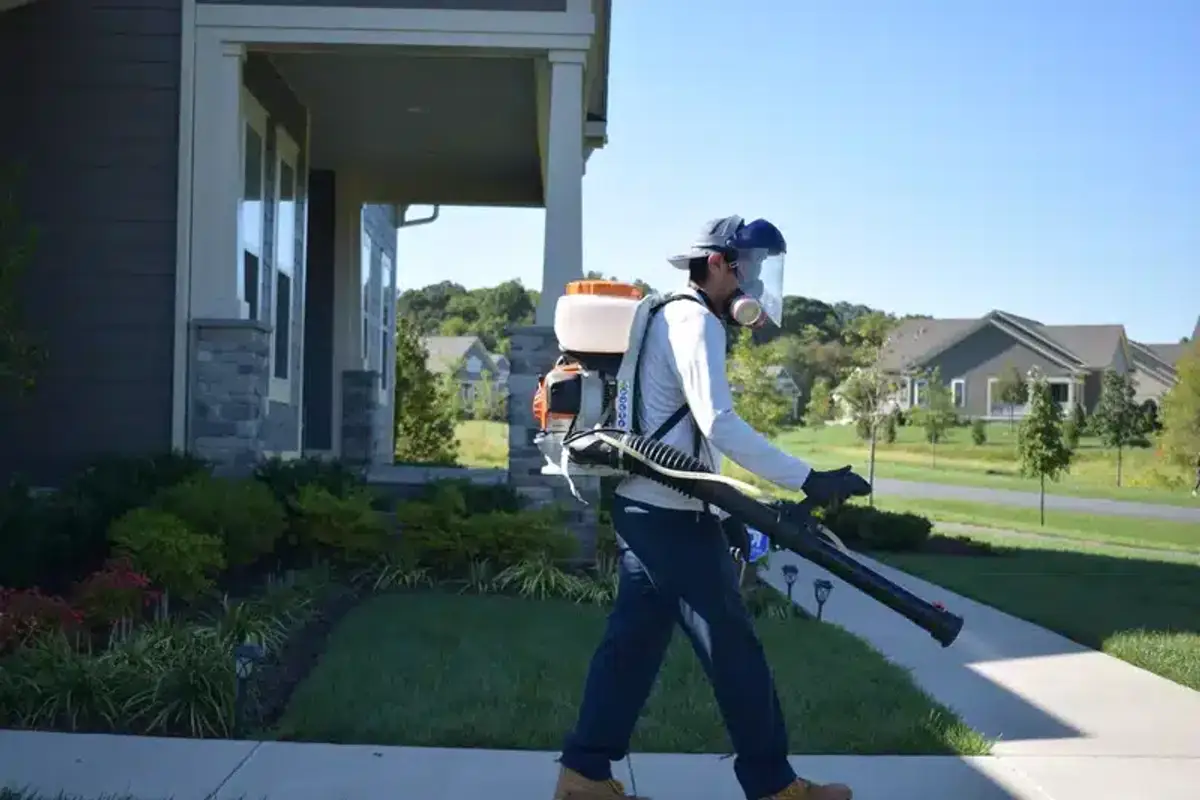
When to Call a Professional Pest Control Service
Consider professional help when you’re dealing with a ladybug infestation involving hundreds or thousands of insects. If you’re seeing large aggregations on your home’s exterior or experiencing an infestation of ladybugs inside, professional treatment becomes necessary.
Also call professionals if you’ve experienced an infestation before and want to prevent future problems. The combination of exclusion work and properly timed barrier treatments provides long-term solutions.
Long-Term Strategies to Keep Ladybugs Away
Successfully controlling ladybugs requires ongoing attention, not just one-time treatments.
Annual Home Maintenance
Every year, inspect and reseal potential entry points. Buildings naturally develop new cracks and gaps as they age, creating new opportunities for ladybugs from entering.
Schedule this home improvement work for late summer, well before the fall migration period. This gives you time to address any issues you discover.
Monitoring and Early Detection
Keep an eye on weather patterns in late September and early October. When you see the first cold front followed by sunny, warm days, that’s when ladybugs start looking for winter shelter.
Watch for early clustering on your home’s exterior. Taking action at the first sign of activity prevents larger infestations from developing.
Ongoing Professional Programs
Many homeowners benefit from seasonal pest management programs that address ladybugs along with other common pests. Our Alexandria pest control and Arlington pest control services include overwintering pest treatments as part of comprehensive annual programs.
These programs time treatments to match local pest activity patterns, providing better results than one-off treatments.
Regional Considerations for the DMV Area
Living in Virginia, Maryland, or DC means dealing with specific patterns of ladybug activity. Our region’s climate creates ideal conditions for these insects, especially during the transition from warm fall days to cooler weather.
Local factors that increase ladybug pressure include:
- Light-colored vinyl siding common in newer developments
- Large agricultural areas that support high aphid populations
- Weather patterns that create distinct warm-to-cool transitions
- Forest edges near residential areas that provide natural overwintering sites
Our Northern Virginia pest control services are specifically designed around these regional challenges. We’ve learned from treating over 100,000 homes in the area what works best for local conditions.
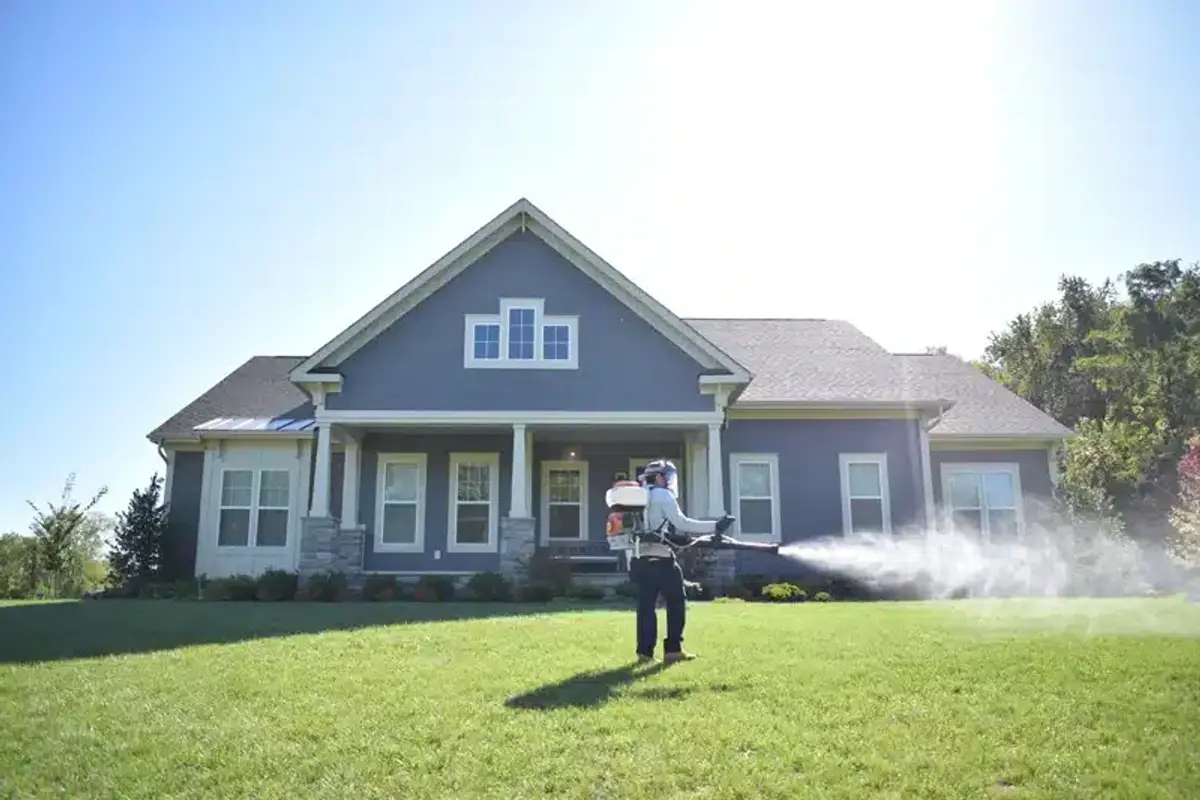
Understanding Treatment Costs and Options
The cost of ladybug control varies depending on your approach and the severity of the problem. DIY methods like vacuuming and caulking cost very little but require ongoing effort.
Professional treatments typically cost more upfront but provide longer-lasting results. The investment often pays off when you consider the time and frustration of dealing with repeated infestations.
For homeowners wanting comprehensive protection, programs like our SeasonGuard service bundle ladybug control with other seasonal pest management. This approach often provides better value than treating each pest issue separately.
You can learn more about pricing options in our pest control cost guide, which breaks down different service levels and what to expect.
Comparing Ladybugs to Other Similar Pests
Sometimes homeowners confuse ladybugs with other insects that cause similar problems. Understanding these differences helps you choose the right treatment approach.
Asian lady beetles are often mistaken for stink bugs, another common overwintering pest. However, stink bugs are larger and shield-shaped, while ladybugs are round and dome-shaped.
For help with identification, check out our guides on ladybug vs beetle differences and ladybugs vs Asian lady beetles. Proper identification ensures you’re using the most effective control methods.
Protecting Your Home Year-Round
While ladybugs are primarily a fall and winter problem, year-round pest management provides the best protection. This approach addresses not just ladybugs but also the many other pests that can affect your home or garden.
Our comprehensive programs cover 33 common pests including ladybugs, providing protection against whatever pest issues arise throughout the year. This proactive approach often prevents problems before they become noticeable.
For specific areas, we offer targeted services in Bethesda, Ashburn, Potomac, and Reston that address local pest pressures.
Successfully managing ladybugs requires the right combination of prevention, early action, and professional support when needed. By understanding their behavior and using proven control methods, you can keep them from coming back and enjoy a pest-free home.
Whether you choose DIY methods or professional pest control services, the key is taking action before small problems become major infestations. Don’t wait until ladybugs have already moved into your home - prevention is always easier than removal.
If you’re dealing with ladybugs in your house or want to prevent future infestations, we’re here to help. Our registered technicians have the experience and tools to solve your pest issues effectively. Call us at 703-683-2000 or email us at info@bettertermite.com for a consultation and customized treatment plan.
Frequently Asked Questions
Still have questions? The answers below cover the most common concerns about ladybug infestations.
What is the fastest way to get rid of ladybugs?
+
The fastest way to remove ladybugs from inside your home is vacuuming with a shop vacuum. Use a nylon stocking inside the vacuum bag to trap them, then immediately empty the contents or freeze the bag to kill remaining insects. This method avoids staining and odors from crushing them.
What do ladybugs hate the most?
+
Ladybugs hate strong scents like citronella and bay leaves. They also avoid areas treated with soapy water solutions. However, the most effective deterrent is simply blocking their entry points with proper caulking and sealing rather than relying on repellent scents alone.
Why is my house suddenly full of ladybugs?
+
Your house is likely experiencing an invasion of Asian lady beetles seeking winter shelter. This typically happens in fall when temperatures drop and they are attracted to light-colored, sun-warmed surfaces. They enter through small cracks and gaps around windows, doors, and siding.
What scent will keep ladybugs away?
+
Citronella oil mixed with water creates an effective natural repellent that can deter ladybugs from entry points. Bay leaves placed near windows and doors may also help. However, these scent-based methods work best when combined with physical exclusion like sealing cracks and gaps.
Can ladybugs damage my home?
+
Ladybugs don't cause structural damage, but they can stain fabrics, walls, and furniture when they release yellow hemolymph. These stains can persist for up to a year on porous surfaces. They may also create unpleasant odors and trigger allergic reactions in sensitive individuals.
When should I call professional pest control for ladybugs?
+
Call professionals when you're seeing large aggregations on your home's exterior (more than 50 beetles) or experiencing indoor infestations with hundreds of insects. Also consider professional help if you've had problems before and want to prevent future infestations through proper exclusion and barrier treatments.
Are Asian lady beetles the same as regular ladybugs?
+
No, Asian lady beetles are an invasive species that looks similar to native ladybugs but causes more problems. They're slightly larger, range from yellow to orange-red, and have an "M" marking on their head. Unlike native ladybugs, they aggressively seek indoor shelter and release yellow fluid when disturbed.
How long do ladybugs stay in my house?
+
Ladybugs that enter your home in fall will try to hibernate until spring. They can remain dormant for several months but become active on warm winter days. Without intervention, they may stay in wall voids, attics, and other spaces from October through March or April.
With five years of hands-on experience in the pest control industry, George Schulz is a registered technician with the Virginia Pest Management Association and a proud third-generation professional in a family business that’s been protecting homes for over 57 years. He manages and trains a team of service pros while also leading internal research efforts—recently spearheading a deep-dive review of thousands of documents on pest control materials to hand-pick the most kid and pet friendly, most effective solutions tailored specifically for homes in the DC metro area.
